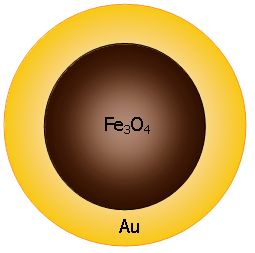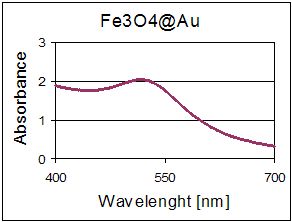Functional nanoparticles for medical applications
Nanoparticles, in general, are defined as a particles between 1-100 nm in size, which is an intermediate between the size of small single molecules and bigger biological macromolecules. According to the physics such particles have properties between classic and quantum mechanic that strongly depend on the particle size, interparticle distance, coating agents and shape. Size dependent properties, which are the most interesting, are observed as quantum size effect in semiconductor particles, surface plasmon resonance in gold nanoparticles and superparamagnetic properties in magnetic materials. All of them permit to their utilization in medicine and science. Quantum dots are used mainly in diagnostic but gold and superparamagnetic nanoparticles permit to both visualization and treatment disease. They are also useful as a platform in drug delivery and gene therapy.
Nanoparticles synthesized in our laboratory are based on ferrite and coated with a gold surface. As ferrite has superparamagnetic properties the basic principle of application of nanopartices is thermoablation, which is inducing localized heating upon application of alternative magnetic field resulting directly in ablation of targeted cells. Thermoablation results in necrosis or sensitizing cells to chemo- or radiotherapy.
The idea is to construct, synthesize and fully characterize Fe3O4@Au nanoparticles conjugated with different proteins, affibodies and cyclic peptides, specifically binding to the protein targets present on cancer cells surface for medical applications: detection, diagnosis and imaging, but mainly for cancer cells destruction by termoablation.

Fig. 1. Schematic diagram of different coating of Fe3O4@Au NP using 3-mercaptopropyltrimethoxysilan together with 3-aminopropyl-(dietoxy)-methylsilan (left) and 11- mercaptoundecanoic acid (MUA) (right).

Fig. 2. Schematic structure of core-shell nanoparticle: core of ferrite, and gold shell.

Fig. 3. Exemplary absorbtion spectra of nanoparticles.




